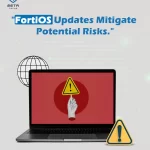Robotic Process Automation (RPA) has redefined efficiency in the workplace, enabling the automation of repetitive tasks through sophisticated technology that emulates human actions. By streamlining workflows such as data entry and transaction processing, RPA liberates organizational resources, allowing for more strategic pursuits. Moreover, its capacity to seamlessly integrate into existing IT infrastructures without extensive learning curves or modifications makes it a versatile tool across diverse sectors, from banking to healthcare, all while maintaining high standards of automation security.

What is robotic process automation?
Robotic Process Automation (RPA) is a technology that uses software robots or “bots” to automate repetitive tasks typically performed by humans on digital systems. These bots can mimic human actions like clicking buttons, entering data, and navigating through software applications. RPA aims to streamline workflows, increase efficiency, and reduce human errors by automating routine and rule-based tasks. It’s widely used across various industries to perform tasks such as data entry, invoice processing, customer service interactions, and more.
Why is RPA important and transformative?
Robotic Process Automation (RPA) stands as a cornerstone in the digital transformation The journey of many organizations has been significantly enhanced by RPA, marking a pivotal point in their operational strategies. Its importance and transformative potential can be attributed to several key factors, including the role of automation security in ensuring these processes are both efficient and secure.
- Efficiency and Productivity: RPA technology significantly enhances operational efficiency by automating routine and time-consuming tasks, RPA not only accelerates workflow processes but also frees up employees to focus on more strategic and creative tasks, thereby boosting overall productivity. The integration of automation security within these processes further enhances their efficiency and reliability.
- Accuracy and Compliance With its rule-based nature, RPA minimizes human errors, ensuring a higher level of accuracy in tasks such as data entry and processing. Furthermore, RPA can be programmed to comply with regulatory standards, making it easier for organizations to adhere to industry-specific compliance requirements. This dual focus on regulatory compliance and automation security significantly enhances operational reliability.
- Cost Reduction By automating tasks that were previously handled manually, RPA helps reduce labor costs. Additionally, the non-invasive integration of RPA with existing IT systems means that organizations can achieve these efficiencies without the need for costly system overhauls or replacements, all while maintaining stringent automation security measures.
Understanding RPA and Its Security Challenges
Robotic Process Automation (RPA) security confronts several challenges that organizations must tackle to protect sensitive data and maintain operational integrity. These challenges fall into three main categories, highlighting the importance of addressing RPA risks, including the broader risks of robotic process automation.
- Bot Management and Identity Verification:
- Accidental Data Exposure and Bot Impersonation Unsupervised or improperly configured bots may inadvertently expose sensitive data to unauthorized users, or their actions could be impersonated, leading to unauthorized access or harmful actions. This underscores the critical need for robust automation security measures to prevent security breaches.
- Credential Storage and Management Weak encryption methods or storing login credentials in plain text can render RPA systems vulnerable to credential theft. The absence of unique identities for bots further complicates the identification of bot-initiated actions, increasing the risk of unauthorized access and highlighting the importance of enhancing RPA credentials and automation security.
- Security Risks in Deployment and Integration:
- Rapid Deployment Oversights Rushing the implementation of RPA solutions without thorough security assessments can lead to unencrypted communication between the RPA bot and backend systems, making them susceptible to cyber-attacks. This scenario underscores the necessity of stringent automation security measures to avoid security breaches.
- Third-Party Integrations between RPA systems and other third-party apps and systems can introduce additional risk points if not adequately secured, expanding the IT infrastructure’s threat landscape. Ensuring robust automation security practices is essential in mitigating these risks.
- Cybersecurity Threats and Legal Risks:
- Cybercriminal Activities Cybercriminals may exploit unprotected bots to gain unauthorized access to internal systems, leading to data privacy threats and non-compliance with regulations like GDPR and HIPAA. This includes potential data exposure of sensitive customer data or confidential business information, emphasizing the need for stringent automation security and regulatory compliance measures.
- Legal and Compliance Risks non-compliant or insecure framework exposes organizations to cybersecurity and legal risks, especially if the RPA solution neglects compliance or regulatory policies. Vulnerabilities such as missing data encryption, SQL injection, and insecure passwords can lead to sensitive data leakage, highlighting the critical need for automation security and regulatory compliance.
To address these challenges, Meta Techs offers RPA security services that include secure development, safe deployment, and robust governance frameworks. Their expertise ensures that RPA deployments are not only efficient and transformative but also secure and compliant with the highest standards of data protection and privacy, embodying the essence of robotic process automation security.
Best Practices for RPA Security
To bolster the security of Robotic Process Automation (RPA) systems and protect against potential threats, organizations should adhere to the following best practices, including automation security measures and an RPA security checklist:
- Authentication and Credential Management:
- Deploy Authentication Protocols: Ensure accountability for bot actions by implementing robust authentication measures.
- Centralize Credential Management Manage passwords effectively by centralizing their management, reducing the risk of unauthorized access and enhancing automation security.
- Use Distinct Credentials for Each Bot: Assign individual login credentials to bots to enhance traceability and security.
- Create a Central, Encrypted Password Vault: Store all bot credentials securely in a single repository, preventing unauthorized access.
- Monitoring and Access Control:
- Proactively Monitor Bosket an eye on bot behavior to promptly identify and mitigate any signs of misbehavior, ensuring robust automation security through diligent bot monitoring.
- Regularly Review and Test RPA Scripts: Address identified risks by thoroughly testing and reviewing RPA scripts.
- Control User Access Limit access to the RPA environment, ensuring that only necessary personnel have access, thereby enhancing security and maintaining a tight grip on automation security.
- Implement Two-Factor Authentication For added security, use two-factor authentication for administrative accounts and restrict RPA system access with multifactor authentication, bolstering automation security.
- Security Framework and Development:
- Implement a Specialized RPA Security Framework: Establish clear roles and responsibilities to ensure a secure RPA operation.
- Ensure Secure RPA Development Involve the Security Team in the RPA development process to preemptively address potential vulnerabilities, a crucial step in maintaining automation security.
- Follow the ‘Least Privilege’ Principle Limit bot access only to necessary apps and databases, minimizing the risk of unauthorized data exposure and ensuring a higher level of automation security.
- Maintain Log Integrity Keep logs secure and forensically sound for thorough investigations in case of security breaches, an essential practice in automation security and log analytics.
Meta Techs services in RPA Security
Meta Techs stands at the forefront of addressing the security challenges associated with Robotic Process Automation (RPA), offering a suite of services designed to safeguard and optimize RPA deployments across various industries. Their comprehensive approach to robotic process automation security is detailed as follows:
- RPA Security Services:
- Monitoring and Logging Utilizing RPA platforms’ powerful monitoring and logging features, Meta Techs enhances the visibility of operational procedures. This facilitates the timely detection of security breaches and unauthorized activities, significantly improving automation security through advanced log analytics.
- Software Updates and Patches Hey collaborate closely with RPA vendors to ensure the regular release of software updates and security patches. This addresses vulnerabilities and fortifies the security posture of RPA systems against emerging threats, enhancing automation security.
- Digital Strategy and Solutions Beyond security, Meta Techs offers a broad spectrum of services including digital strategy development, digital solutions, and performance improvement & support. This ensures that RPA deployments align with the overarching business objectives and digital transformation goals, maintaining a strong focus on automation security.
Conclusion
In facing the challenges of RPA security, organizations must adopt a proactive stance, implementing best practices and leveraging the expertise of partners who can navigate the complex security landscape. Meta Techs stands ready to assist organizations in fortifying their RPA systems with top-notch automation security, providing the assurance needed to confidently embrace the benefits of automation. As businesses continue to harness the capabilities of RPA, aligning with partners like Meta Techs will be crucial in not just achieving operational excellence but in safeguarding the future of their digital endeavors. To explore how Meta Techs can elevate the security of your RPA deployments and ensure compliance with industry standards, consider exploring their tailored solutions designed to meet the unique needs of your organization.
FAQs
How Can You Ensure the Security of Robotic Process Automation (RPA)?
To safeguard RPA, it’s essential to adhere to several security best practices. These include establishing a comprehensive RPA security framework, avoiding hard-coded access rights, applying the ‘least privilege’ principle, ensuring the integrity of logs, securely managing RPA development, safeguarding confidential information, recognizing system limitations, and preventing security issues that could lead to fraud or misuse, all of which are integral components of an effective rpa security checklist.
What Does the Future Hold for Robotic Process Automation?
The future of RPA looks promising, with advancements in artificial intelligence (AI) making these bots more efficient and reliable as digital workers. This evolution is not just about speed but also about enhancing automation security through cognitive intelligence, making RPA systems smarter and more adept at handling complex tasks. While the growth rate in the RPA market may decelerate, the sector is expected to become more consolidated and competitive, with-IT teams laying down stronger data foundations to support these advancements.
What Are the Advantages of Implementing Security Measures in RPA?
Implementing security measures in RPA significantly enhances data protection by minimizing human interaction with sensitive information. This reduction in human handling helps in averting expensive data breaches and leaks, thereby elevating the overall security posture and fortifying defenses against potential security breaches.
How Does Robotic Process Automation Enhance Cybersecurity?
RPA enhances cybersecurity by continuously analyzing various locations to ensure information is correctly categorized and stored. It can validate, relocate, or delete data as needed to protect sensitive information from unauthorized changes and access. This capability not only helps in safeguarding data but also enables security professionals to locate necessary information more efficiently, bolstering the automation security framework.
Is RPA the same as artificial intelligence (AI)?
Robotic Process Automation (RPA) and Artificial Intelligence (AI) are distinct technologies, each with its unique capabilities and applications. Understanding their differences is crucial for businesses considering digital transformation strategies. Incorporating automation security and cognitive intelligence into these strategies can significantly enhance their effectiveness.
- Technology Focus:
- RPA: Automates repeatable business processes by mimicking human actions on a computer. It is primarily used for tasks that are high-volume and repetitive, involving structured data. This bot process automation also incorporates automation security to ensure that these tasks are performed securely.
- AI: Simulates human intelligence processes, including decision-making, and can process unstructured data. AI technologies, equipped with cognitive intelligence and augmented analytics, are capable of learning from experience and improving over time, making them suited for tasks requiring adaptation and complex decision-making.
- Applications and Capabilities:
- RPA: Suited for tasks such as data entry, transaction processing, and automating routine office tasks. RPA follows predefined rules and incorporates automation security, ensuring that it does not have the capability to learn or make decisions independently but operates within a secure framework.
- AI: Used in a variety of applications such as speech recognition, image processing, and natural language processing. AI, with its cognitive intelligence and intent identification capabilities, can make decisions based on data analysis and is used in more complex scenarios like customer service bots, predictive analytics, and personalized recommendations.







